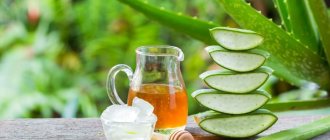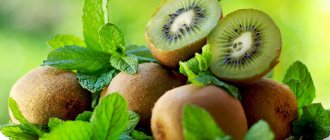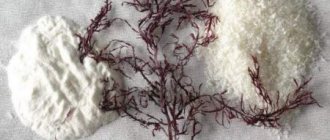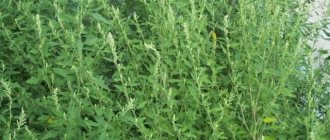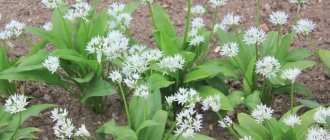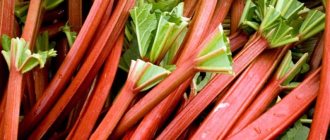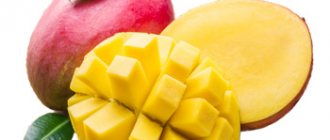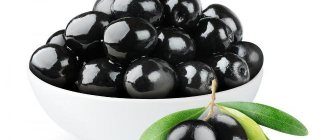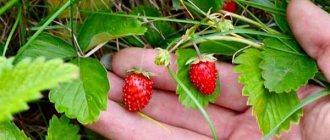Difference between Aloe Vera and Agave
Aloe vera is scientifically called agave, and tree aloe is called agave. These are relatives from the Asphodel family. In terms of chemical composition, properties and effects on the body, both types of plants are similar. But in medicine and cosmetology it is believed that aloe vera is used for oral use, and agave for external use.
The difference lies in external signs. Agave has a tree-like trunk on which leaves grow. Faith has no pronounced pillar, and leaves literally grow from the ground.
Both types are unpretentious, do not require special care, frequent watering and special temperature conditions. Due to this, this type of plant is grown in country houses and apartments for use in folk medicine and home cosmetology.
juice is squeezed from the leaves of an adult aloe plant, which increases its medicinal capabilities
About the benefits of aloe. Medicinal properties. What does it help with?
Aloe vera medicine is used for various diseases because it has a wide range of effects on the body:
- they are used to gargle a sore throat during flu, pharyngitis, laryngitis, because the flavonoids in the composition instantly relieve swelling and pain;
- Agave juice strengthens the functioning of the heart muscle and prevents the development of coronary disease by thinning the blood and improving blood circulation;
- in dentistry it is used to strengthen gums and prevent bleeding;
- By taking aloe juice orally, you can clean the urinary canals and prevent urolithiasis;
- normalizes the functioning of the digestive system, stops heartburn;
- relieves inflammation in infectious diseases;
- strengthens the immune system, increases the body's protective functions in adults and children;
- reduces pain in diseases of osteochondral tissue.
The use of aloe is multifaceted: you can drink the juice, apply it to a wound, mix the pulp with honey for oral administration, buy extracts, extracts and other preparations at the pharmacy.
like any medicinal plant, aloe has contraindications for use that must be followed
Contraindications to the use of recipes with aloe. Danger of overdose
Like any product or plant, in addition to its beneficial effects, aloe has contraindications:
- Women during pregnancy and breastfeeding should not take aloe vera medications internally, only external use is permissible;
- in case of sudden changes in blood pressure, it is better to discard the product;
- strictly prohibited for oncological diseases, because the plant provokes the growth of malignant cells;
- In case of vascular diseases, fragility, varicose veins, varicocele, thrombosis, it is prohibited to take the juice without consulting a doctor.
Before using pharmaceutical medications, you should read the instructions for use so as not to harm your health.
In case of overdose, an allergic reaction may occur. Its main symptoms are itching, redness and irritation of the skin. Also, when taken orally, nausea and vomiting occur. In this case, you need to immediately rinse your stomach, take a sorbent, Activated carbon, for example, and seek help from a doctor.
To obtain the greatest therapeutic effect, you must adhere to the dosage and rules for taking the drug
Aloe is a unique cure for many diseases
Treatment with Aloe. How to take aloe internally
In this article I want to tell you about one unique and inexpensive herbal medicine for gastritis and constipation, cough , bronchitis and tracheitis , sore throat , runny nose and herpes ...
And from many, many other diseases... This is Aloe.
For treatment, it is best to use pharmaceutical Aloe preparations. For example, Aloe juice is often sold in pharmacies. The cost of one bottle of Aloe juice (at the end of 2021) is about 100 rubles.
Attention! Aloe is used in different ways to treat different diseases! Below are 2 recipes with Aloe, depending on what diseases you need to treat.
And be sure to read the article to the end to clarify the contraindications for the use of Aloe!
Aloe juice for gastritis, constipation, sore throat, herpes and inflammation of the esophagus, and to improve immunity:
Aloe juice helps strengthen the immune system. In addition, Aloe juice is good for gastritis, especially gastritis with low acidity. It also helps fight constipation, especially spastic and atonic. Aloe juice is also useful for the treatment of sore throat, chronic tonsillitis and inflammation of the esophagus.
For these diseases, I recommend doing this:
Dissolve a teaspoon (about 5 ml) of aloe juice half an hour before meals, or immediately before meals, 3-4 times a day.
The course of treatment is from 2 weeks to 1 month.
For herpes, we take aloe juice in the same way, but in addition we also apply gauze pads, generously moistened with aloe juice, directly to the area of herpetic rashes.
It is important to know! With gastritis, the effect of using aloe juice may not occur quickly - with this disease, aloe juice must be drunk for at least 2 weeks, and to achieve a lasting effect it must be taken for about 1 month.
But you also don’t need to drink aloe for more than 1 month! With longer use of aloe juice, minerals are removed from the body, especially potassium, which disrupts water-salt metabolism and negatively affects the heart.
An effective recipe with Aloe juice for cough, bronchitis, tracheitis and laryngitis:
Take equal parts of aloe juice, honey, and slightly softened butter. Mix it all thoroughly in a glass or enamel bowl. The result will be a non-uniform mixture (the fact that it is non-uniform is normal).
And this mixture should be eaten with unsweetened tea, 1-2 teaspoons 3 times a day.
The course of treatment is 5 days.
The effectiveness of this mixture is very high; in about 80-90% of patients it helps with cough immediately, literally in 1-2 days. - But, of course, except for those cases when the cough is caused by taking certain pills, for example, for hypertension - and this often happens in people who have been taking medications that lower blood pressure for years. We talked about this in our program about cough treatment.
Question: is it possible to use Aloe leaf growing at home instead of pharmaceutical aloe juice? - It’s possible, but only on the condition that it’s the same aloe. Then take an aloe leaf and peel it off! , finely chop the aloe leaf (without peel). And mix in equal parts crushed aloe leaves (along with the resulting juice), honey, and butter. Then we do everything as indicated in the recipe above.
***
Aloe is a unique medicine. But it also has contraindications.
Contraindications to taking aloe juice:
Increased secretion of digestive glands, diarrhea, exacerbation of hemorrhoids, intestinal obstruction, Crohn's disease, ulcerative colitis, appendicitis, abdominal pain of unknown origin, pregnancy, breastfeeding.
It is not advisable to take aloe juice if you have an individual sensitivity to aloe, hemoptysis, or severe pathologies of the cardiovascular system.
Use with caution - for children under 12 years of age.
You should not take aloe vera preparations during your period!
With caution - with hypertension, with a tendency to increase blood pressure; and for stones in the gall bladder.
Side effects:
Some people may experience the following side effects when taking aloe juice orally:
- allergies, dyspepsia, heartburn, abdominal pain, loose stools;
- feeling of a rush of blood to the pelvic organs;
- increased menstrual bleeding.
Occasionally - increased body temperature and (or) increased blood pressure. Uncommon, but some people may experience lower blood sugar levels when taking aloe.
In some people (rather rarely), aloe juice can cause agitation and sleep disturbance.
In this case, you should not take aloe immediately before bed; it is best to drink aloe juice no later than 2 hours before bed.
***
What about oncology? After all, there is an opinion that Aloe can provoke the growth of oncology? — This stupidity is described here *
***
At the end of the article there is one hint and an answer to a common question:
Clue:
Pharmacy Aloe juice should be stored at a temperature no higher than +15 degrees Celsius, otherwise it will quickly lose its medicinal properties.
If your home temperature is above 15 degrees, store aloe juice on the top shelf of the refrigerator door. But do not let it freeze, do not store the juice at temperatures below 5 degrees!
Question. What kind of aloe can I use?
Aloe is the general name of a genus of plants. Most often, two types of aloe are used for treatment: real aloe (aloe vera) and aloe vera (the so-called “agave”).
They are quite difficult to distinguish. Both plants have similar medicinal properties and have a similar composition of active ingredients. The medicinal properties of these two plants are almost the same.
***
The author of the article is Dr. Evdokimenko©. Published 02/15/2019. Attention! When copying or reprinting materials, be sure to indicate the source! All articles, news and book chapters are protected by copyright P.V. Evdokimenko©
Preparation of raw materials. Collection and preparation of aloe
The peak of usefulness of agave occurs in the 4-7th year of the plant’s life. In the first 3 years, there is no point in squeezing the juice from the leaves, because it still does not contain enough useful substances for treatment with this crop.
On an industrial scale, juice is extracted by specially trained people using special equipment. To prepare a product at home, you need to remember a few rules:
- cut leaves only from aloe that is more than 3 but less than 10 years old;
- you need to use the lower leaves, which are much thicker and juicier - they contain more juice and nutrients;
- It is not recommended to water the plant for 10 days before cutting.
Aloe can be stored in the refrigerator for 10 days after cutting, or you can immediately wash it, grind it in a blender and squeeze the juice through cheesecloth. It needs to be boiled for a few minutes before use.
Instructions on how to drink neat
- Against cough . Aloe juice has an expectorant effect, so it is effective to take for various diseases of the upper respiratory tract. To do this, take 1 teaspoon of juice three times a day.
- To boost immunity . Dilute 2 teaspoons of aloe juice in 1 glass of warm boiled water. Divide into two doses. Take a course of 14 days.
- For prevention . Take 1 teaspoon of juice 2 times a day for 2 weeks.
- For the nose.
- For rhinitis, drop 1-2 drops into each nostril twice a day (morning and evening).
- For children under 10 years of age with a runny nose, it is recommended to dilute the juice with warm boiled water in a ratio of 1:3. The dosage regimen is similar to the dosage regimen for adults.
- For skin . Apply the juice to a layer of gauze and wipe your face twice a day, every day for a month. This will help make the skin clearer, tighter, and eliminate redness and fine expression wrinkles.
- For gastritis and ulcers . Take the juice with honey in a 1:1 ratio, 2 tsp each. morning and evening, preferably 30 minutes before meals for 2 months. If you suffer from gastritis or ulcers, consult your doctor before taking aloe juice.
- For constipation . In this case, take 1 teaspoon of juice in a glass of warm water before bed.
We suggest reading other useful articles about aloe juice:
- How to save aloe juice for future use?
- Feeding indoor flowers with aloe juice.
Storage conditions and shelf life
Store aloe-based preparations away from children in a cool, dark place. The shelf life of juice, syrup and liniment is 2 years from the date of production. Tablets - 3 years. If exposed to direct sunlight for a long time, the preparations become unsuitable for use.
The pharmaceutical industry produces a variety of dosage forms with aloe extract
Pharmacy drugs
Aloe juice can be purchased at the pharmacy in different dosage forms. What drugs based on liquid extract does the pharmaceutical industry offer?
- Aloe syrup. It contains iron, so the drug is useful for hematopoiesis and increasing hemoglobin. It is prescribed for anemia, after blood loss, protracted illnesses to restore the body, and with an inadequate diet. The medicine is drunk diluted (1 teaspoon of syrup diluted in ¼ glass of water). Long-term use may cause constipation or diarrhea, nausea, increased blood pressure and temperature. It is also important to know that aloe in combination with iron stimulates hematopoiesis processes, ensures a rush of blood to the pelvis and to the respiratory organs. If uterine bleeding, hemoptysis, hemorrhoids have previously been noted, the drug is contraindicated or taken under strict medical supervision.
- Aloe vera drink. The benefit of this drug is that it retains all the beneficial substances of the plant, and in addition to the juice, it contains pulp in the form of pieces. The market offers various overseas (and expensive!) versions of this drink with the addition of other components. The drink itself does not contain bitterness, despite the natural bitter taste of the juice. There are mixed reviews about this product. Someone says that the drink does not quench thirst, but on the contrary, it intensifies it and dries out the mucous membranes. Some people complain about a strange chemical taste, others don’t like its consistency and excessive sweetness. Therefore, it is worth trying this drink once (and choosing the best quality) to have a clear idea about this product.
- Juice with alcohol preservative. The uses of alcohol-based aloe vera juice are the same as homemade juice. Although the instructions for the drug indicate a narrower list of indications - constipation of spastic and atonic origin, gastritis, colitis, enterocolitis, purulent skin infections (external use). The course of treatment lasts 2–4 weeks.
Fresh aloe juice is a powerful biogenic stimulant. It cannot be drunk in its pure form in large volumes, only in a strict dosage - 1 tsp. 3 times a day. It is necessary to consult a doctor before starting the course. The drug can provoke exacerbation of chronic diseases, heavy menstrual bleeding, and heartburn.
The widespread use of aloe juice in folk, traditional medicine and cosmetology is explained by the unique healing properties of the flower. They treat gastritis, ulcers, constipation, pancreatitis, sore throat, sinusitis, tonsillitis, stomatitis, and runny nose. An effective cough medicine for colds, flu, ARVI, pneumonia, tuberculosis, and asthma. This remedy also helps with eye diseases, joint pain, gynecological problems, and strengthens the immune system. The drug is no less effective when used externally.
The use of various dosage forms of aloe
Aloe juice, the instructions for which are important to study before use, can be produced in different dosage forms and taken orally or externally.
Fresh Juice
You can prepare aloe juice at home or purchase it at the pharmacy. It is sold in 50 and 100 ml bottles. Some manufacturers produce 500 ml and 1 liter.
How the product is useful:
- in case of diseases of the gastrointestinal tract, it normalizes the functioning of the digestive organs;
- for gastritis, relieves inflammation and burning;
- for constipation, normalizes stool;
- for sore throat, relieves swelling and redness;
- Externally used for erosions, ulcers, dermatitis, insect bites.
To improve the functioning of the gastrointestinal tract, you need to take 1 tsp orally. 3 times a day before meals, course of treatment - 2 weeks. If deterioration is felt during this time, you should consult a doctor.
For sore throat, stomatitis, gingivitis and other infectious and inflammatory lesions of soft tissues, you need to rinse. For 100 ml of water, 10 ml of juice. Rinse for 3 minutes. The course is at least 5 days. The vitamins and minerals contained in agave relieve swelling and inflammation, kill germs, speed up healing (if there are ulcers) and improve the general condition of the patient.
For skin lesions, pharmaceutical aloe juice is used externally. A cotton pad should be moistened with juice and applied to the affected area of skin as an application for 15 minutes.
aloe extract can be purchased in tablet form, which greatly simplifies its use
Sabur - evaporated juice
It is a dry, hardened, condensed juice obtained by evaporation from the fleshy leaves of various species. Visually, the pieces look like brown resin. There are 2 types of sabur - glossy and matte. It is fragile and easily ground into powder. Disadvantages: unpleasant odor and bitter taste. Sabur dissolves easily in liquids.
Due to the fact that aloe causes blood flow to the pelvic organs, it cannot be used during pregnancy due to the risk of uterine tone and miscarriage. Also contraindications are hemorrhoids and varicoceles (varicose veins of the male genital organs).
Syrup
The syrup can be purchased at the pharmacy. The product contains a solution of ferric chloride, aloe extract, hydrochloric acid and citric acid. It appears to be an orange liquid with a bittersweet aftertaste. Prescribed for low hemoglobin in children and adults. The syrup improves the functioning of the gastrointestinal tract, normalizes iron levels in case of poor nutrition, loss of strength and various diseases.
To take, you need to dilute 1 tsp. syrup in 70 g of water and drink 2 times a day for 2 weeks. If adverse reactions occur during treatment, you should consult your doctor.
Aloe extract liquid in ampoules
The drug is available in the form of an injection solution. Belongs to the pharmacological group of general tonic drugs. Prescribed for stomach ulcers, asthma, keratitis, conjunctivitis. The dosage and course of treatment are prescribed on an individual basis. Adults: 1 ml twice a day. The course is 2 weeks, then a break and repeat. Depending on the illness, children are prescribed 0.2 ml once a day.
Aloe extract according to Fedorov eye drops dietary supplement
Bioactive supplement - drops from Fitomax according to Fedorov - is a product based on natural components of plant and animal origin. The composition includes aloe extract, bee honey, vitamin B6, ascorbic acid. Aloe juice in the eyes is used for:
- dryness;
- redness;
- computer fatigue;
- inflammation and conjunctivitis.
aloe extract is actively included in cosmetic and hygiene products for skin and hair care
Aloe liniment
Aloe liniment is sold in pharmacies. This is a drug for external use, belonging to the pharmacological group of regenerating agents. Prescribed for:
- thermal burns and frostbite:
- dermatological diseases - psoriasis, eczema, pityriasis versicolor, dermatitis;
- boils, boils, abscesses.
Aloe contains eucalyptus and castor oils. The drug has a wide spectrum of action:
- relieves inflammation;
- disinfects;
- accelerates healing;
- prevents tissue rotting.
Solving health problems
Gastrointestinal diseases:
- inflammation of the esophagus;
- stomach ulcer;
- acute and chronic gastritis;
- intestinal candidiasis;
- gum problems;
- gastric acidosis, heartburn;
- regulation of excretion (diarrhea, constipation);
- loss of appetite, anorexia;
- nausea;
- haemorrhoids.
Article for you:
Beet juice: medicinal properties and contraindications
Skin problems:
- acne;
- eczema;
- herpes;
- psoriasis;
- fungal skin diseases;
- burns, incl. solar;
- warts;
- dandruff;
- cellulite.
Treatment for other health problems:
- atherosclerosis, hardening of vascular walls;
- high cholesterol;
- destruction of streptococci and staphylococci;
- impaired mobility of joints and musculoskeletal system;
- fatigue, stress, depression;
- diabetes;
- weight loss
Aloe at home: traditional medicine recipes
From aloe at home, you can prepare many drugs against inflammatory and non-inflammatory diseases.
How to make juice
To squeeze juice from aloe, you need to cut off the largest leaves from the bush, rinse thoroughly under running water, and cut off the needles on the sides. After this, place the leaf in a blender bowl or meat grinder. After grinding, the resulting pulp must be pressed through cheesecloth to separate the pure juice and cake.
You can use freshly prepared raw juice or boiled juice. Boil for no more than 3 minutes. The plant does not lose its beneficial properties after heat treatment. Store the product in a dark and cool place, away from children. Store aloe juice in the refrigerator.
aloe juice with honey is an excellent preventive and therapeutic remedy for colds
Add honey to the mixture
Water with aloe and honey is the No. 1 remedy during seasonal epidemics. The combination of beneficial substances increases the body's defenses and reduces the risk of catching a cold or flu. Honey has many beneficial properties and in combination with aloe only enhances its effects.
To obtain a medicinal mixture, you need to grind the leaf and mix it with honey in equal proportions. The product can be stored in the refrigerator for up to 5 days. This mixture is often used in 2 cases:
- To treat and prevent colds, you need to eat 1 tsp in the morning or before leaving the house. adults and 0.5 tsp. children under 10 years old.
- The second way to use this composition is cosmetically. Honey nourishes and heals the skin, aloe tones. Can be used in the form of masks 2 times a week against acne, dryness, pigmentation. Application every other day for 15 minutes will slow down the aging process and the appearance of wrinkles.
aloe with honey and Cahors is a highly effective general tonic
Recipe with honey and Cahors
Aloe drink with Cahors and honey is one of the best traditional medicines used by our ancestors. It is general strengthening and has a multifaceted effect on all organs and systems:
- promotes the formation of red blood cells, thereby increasing the amount of hemoglobin (used for the treatment and prevention of anemia);
- normalizes intracellular metabolism;
- due to the enzymes included in the composition, it improves the functioning of the gastrointestinal tract;
- In case of cancer, aloe in its pure form is not recommended, but in combination with honey and Cahors, the drink kills existing cancer cells and prevents the appearance of new ones.
To prepare you will need:
- 1 kg of chopped leaves (in a meat grinder);
- 1 l Cahors;
- 2 liters of natural honey.
All components must be mixed in one container until a homogeneous mass is obtained and left in a dark and cool place for 10 days. After this, transfer to the refrigerator and take 1 tsp 3-4 times a day. 20 minutes before meals.
Children can also drink 1 tsp. 2 times a day as a general tonic and immunomodulatory drug.
alcohol tincture with aloe has a powerful anti-inflammatory and antiseptic effect
Aloe tincture with alcohol
Alcohol tincture is used externally. It has analgesic, anti-inflammatory and calming properties. Can be used:
- for disinfection of skin around wounds, abrasions, scratches, burns;
- for insect bites (especially when mosquitoes bite, the infusion relieves itching);
- For pain in the knees, neck, and lower back, alcohol has a warming effect.
To prepare, you will need 1 kg of washed aloe leaves, 100 g of sugar and 0.5 vodka or alcohol (medicinal). The leaves need to be picked and kept in the refrigerator for 10 days, then finely chopped and placed in a jar. Sprinkle sugar on top and pour vodka. Leave in a cool place for a week. Then the infusion is used for compresses and rubbing.
Biostimulated aloe juice and its use
Biostimulated juice differs from fresh juice in its preparation method and qualities. Before the liquid is squeezed out of the leaves, they are kept in the refrigerator for 10-12 days. Under the influence of cold, substances are formed in the leaves that act more intensely and more effectively than the fresh product. This juice quickly destroys microbes, heals wounds, and improves the general condition of the body. It can be used externally and internally, just like fresh juice.
Due to its good moisturizing and nutritional properties, aloe juice is effectively used in cosmetology
Instructions for preparation, administration and storage
Succulent juice is extracted industrially and at home. The instructions for the pharmaceutical preparation (95% alcohol tincture) contain the following recommendations:
- use in complex treatment for enterocolitis, gastritis, chronic constipation orally 30 minutes before meals, a teaspoon (5 ml) 2-3 times a day for 15-30 days;
- for purulent skin manifestations, irrigate the affected areas or apply lotions to them.
Aloe juice in the form of sabur has the following instructions for use:
- use small doses (0.03-0.1 g) as a laxative; they can be combined with rhubarb preparations - after 6-12 hours a gentle, complete bowel movement will occur;
- for rapid emptying (drastic effect), doses of 0.2-0.5 g are used, repeating large doses is allowed no more than 3-5 days;
- as a choleretic agent for liver and gastrointestinal problems, it is used in doses of 0.01-0.015 g.
Sabur crystals are dissolved in water before use.
How to cook at home?
In many families, aloe is grown on the windowsill, so there is no point in purchasing pharmaceutical preparations. You need to remember a few rules on how to prepare aloe juice at home.
The juice is extracted only from the lower leaves, which reach 15 cm in length. Before squeezing juice, the plant should not be watered for 8-14 days.
To treat wounds, apply a fresh cut of aloe leaf to the wound. Those who plan to use the juice internally as a general tonic or vitamin supplement are advised to add the pulp of freshly cut leaves to salads. This advice is also suitable for those who are on a diet to lose weight.
Ways to squeeze
We can recommend several ways to squeeze juice from aloe at home:
- the washed leaves are finely cut with a knife, passed through a meat grinder or crushed in a blender, then squeezed through cheesecloth;
- the leaves are processed using a press or juicer.
Another preparation option is to scrape the pulp from the leaves and mix with citrus juice (orange, grapefruit). It stabilizes the composition and improves the taste. You can mix by hand or with a blender.
How to use?
There are many traditional medicine recipes for taking aloe juice.
The easiest way is to stir a spoonful of juice in water and drink. Because This product has a bitter taste, it is advisable to add fruit juice or fruit drink. The preparation can be added to tea and seasoned with honey, resulting in a vitamin antimicrobial drink. This tea is useful during flu or ARVI epidemics. The following recipes are used for medicinal purposes:
- irrigate the oral cavity with juice or its solution for stomatitis, gingivitis, etc.;
- rinse your mouth with juice and massage your gums with your fingers soaked in it for periodontitis;
- for a runny nose, drop 2-3 drops into the nostril; the mixture can be prepared in advance by mixing a teaspoon of onion juice and honey with a few tablespoons of aloe juice;
- If you have a cold, drink a mixture of juice and honey (a teaspoon).
In folk medicine, most recipes use crushed aloe leaves to prepare a mixture with Cahors, vodka, lemons, and honey. They are used as immune stimulants, vitamin supplements, and medicine for colds and coughs.
How to store?
It is more correct to use aloe juice immediately after preparation. If you plan to make the preparation for future use, you should know how to properly store aloe juice. The period should not exceed a week. The pomace should be placed in a sterile container or airtight container, then refrigerated.
It is believed that cut aloe leaves, when stored in a cool, damp place, increase their bioactivity and trigger the synthesis of biologically active substances.
